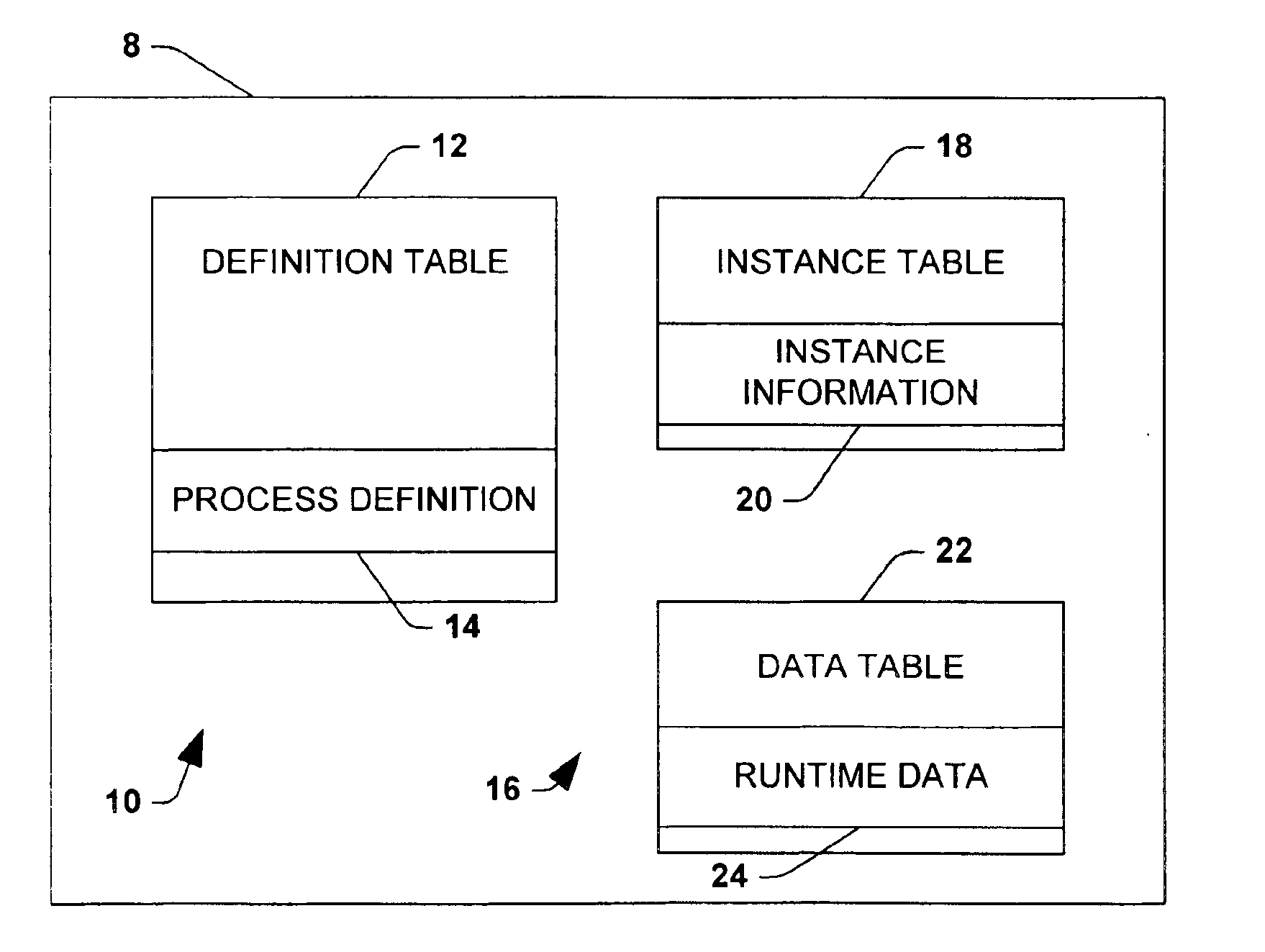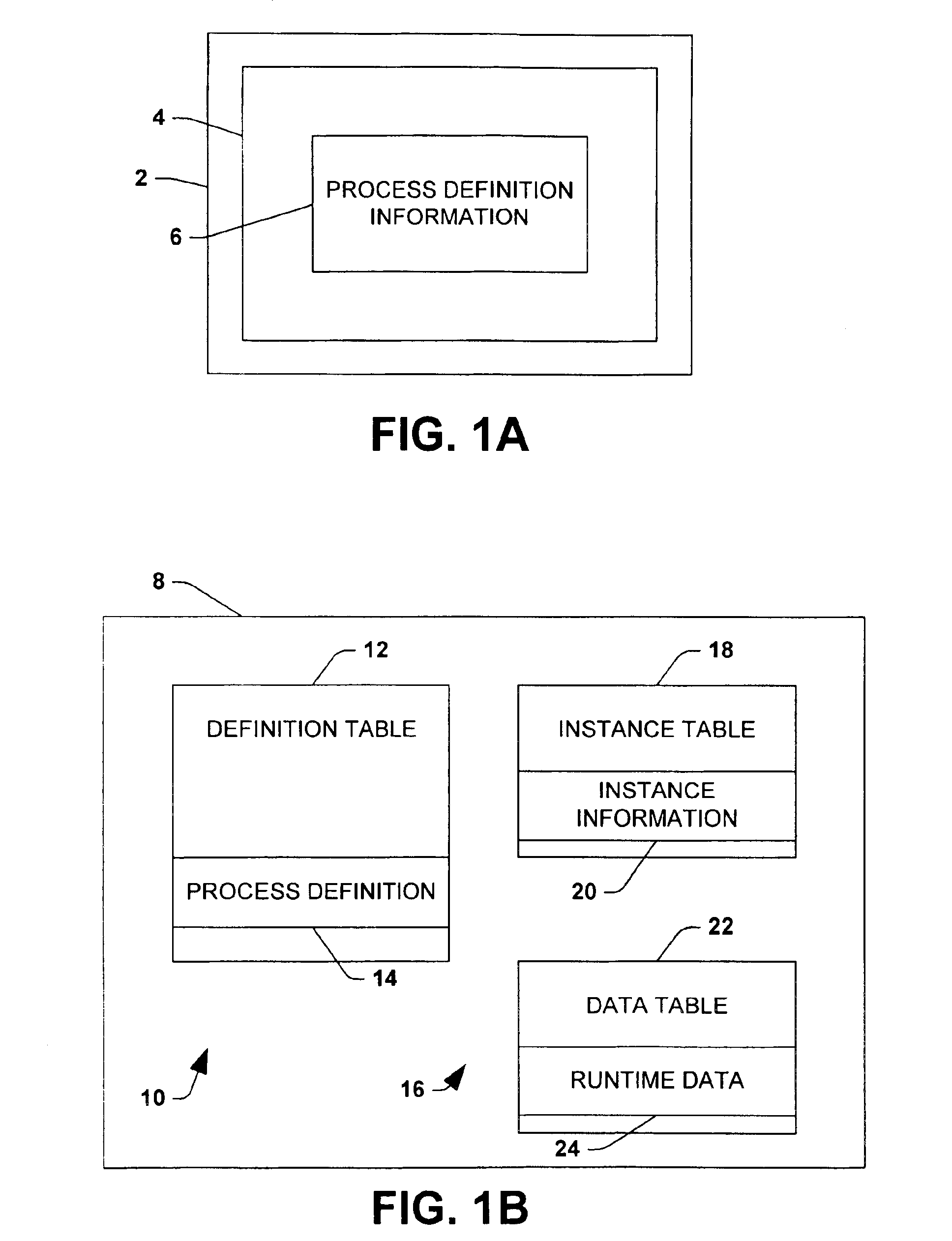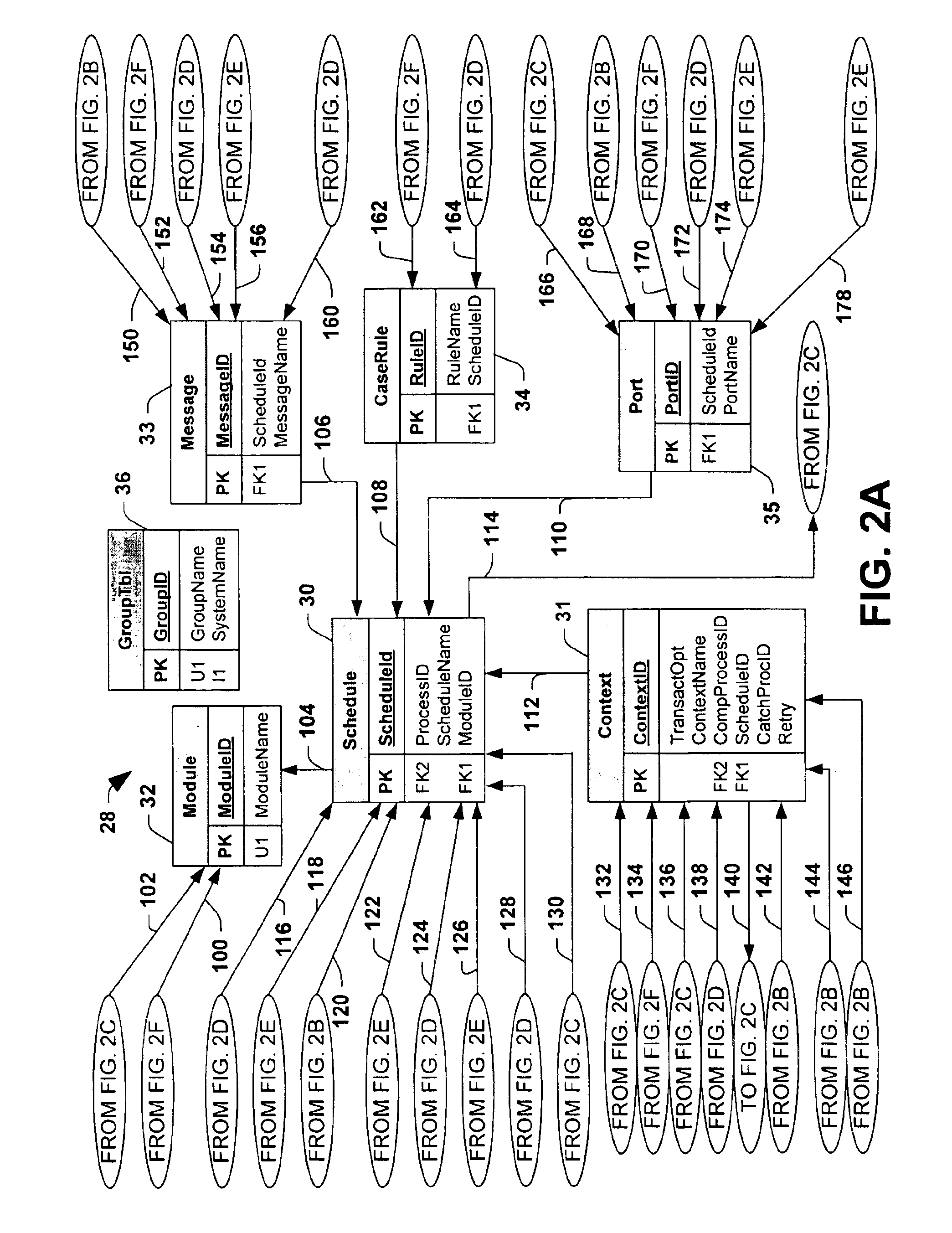Method for persisting a schedule and database schema
a database schema and schedule technology, applied in the field of computer system transaction processing, can solve the problems of high cost of storage efficiency, ineffective mechanism of prior transaction processing system, and inability to provide runtime information update,
- Summary
- Abstract
- Description
- Claims
- Application Information
AI Technical Summary
Benefits of technology
Problems solved by technology
Method used
Image
Examples
Embodiment Construction
[0035]The following is a detailed description of the present invention made in conjunction with the attached figures, wherein like reference numerals will refer to like elements throughout. According to one aspect of the invention, a database schema is provided, having a definitional element or component with at least one table representing process definition information derived from a process definition language representation of a process. The schema may further comprise a runtime element with at least one instance table for storing instance information and at least one data table for storing runtime data.
[0036]FIG. 1A illustrates one exemplary database schema 2 for storage of process information in a database (not shown) in accordance with the invention. The schema 2 includes a table 4 having process definition information 6 therein. A user may advantageously extract or reconstruct a definitional language representation of a schedule or other process from the process definition i...
PUM
 Login to View More
Login to View More Abstract
Description
Claims
Application Information
 Login to View More
Login to View More - R&D
- Intellectual Property
- Life Sciences
- Materials
- Tech Scout
- Unparalleled Data Quality
- Higher Quality Content
- 60% Fewer Hallucinations
Browse by: Latest US Patents, China's latest patents, Technical Efficacy Thesaurus, Application Domain, Technology Topic, Popular Technical Reports.
© 2025 PatSnap. All rights reserved.Legal|Privacy policy|Modern Slavery Act Transparency Statement|Sitemap|About US| Contact US: help@patsnap.com



